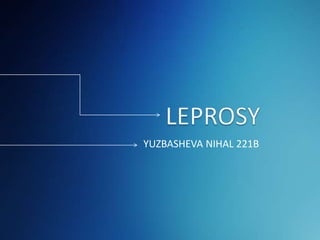Leprosy, also known as Hansen's disease, is a chronic bacterial infection caused by Mycobacterium leprae. It primarily affects the skin and nerves. There are approximately 600,000 new cases detected worldwide each year. It is endemic in many developing countries. The disease presentation exists on a spectrum from tuberculoid leprosy to lepromatous leprosy depending on the immune response. Left untreated, leprosy can cause permanent nerve damage and deformities. Standard treatment involves multidrug therapy with dapsone, rifampin, and clofazimine over the course of months or years.





























